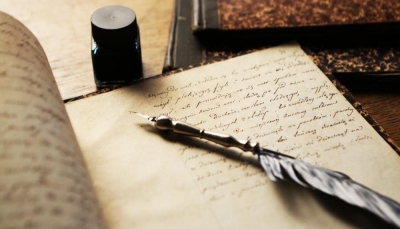
A manuscript was, traditionally, any document written by hand – or, once practical typewriters became available, typewritten – as opposed to mechanically printed or reproduced in some indirect or automated way.
The study of the writing in surviving manuscripts, the “hand”, is termed palaeography (or paleography). The traditional abbreviations are MS for manuscript and MSS for manuscripts, while the forms MS., ms or ms. for singular, and MSS., mss or mss. for plural (with or without the full stop, all uppercase or all lowercase) are also accepted. The second s is not simply the plural; by an old convention, a doubling of the last letter of the abbreviation expresses the plural, just as pp. means “pages”.
A manuscript may be a codex (i.e. bound as a book) or a scroll. Illuminated manuscripts are enriched with pictures, border decorations, elaborately embossed initial letters or full-page illustrations.
Most surviving pre-modern manuscripts use the codex format (as in a modern book), which had replaced the scroll by Late Antiquity. Parchment or vellum, as the best type of parchment is known, had also replaced papyrus, which was not nearly so long lived and has survived to the present only in the extremely dry conditions of Egypt, although it was widely used across the Roman world. Parchment is made of animal skin, normally calf, sheep, or goat, but also other animals. With all skins, the quality of the finished product is based on how much preparation and skill was put into turning the skin into parchment. Parchment made from calf or sheep was the most common in Northern Europe, while civilizations in Southern Europe preferred goatskin. Often, if the parchment is white or cream in color and veins from the animal can still be seen, it is calfskin. If it is yellow, greasy or in some cases shiny, then it was made from sheepskin.
Picture Credit : Google




